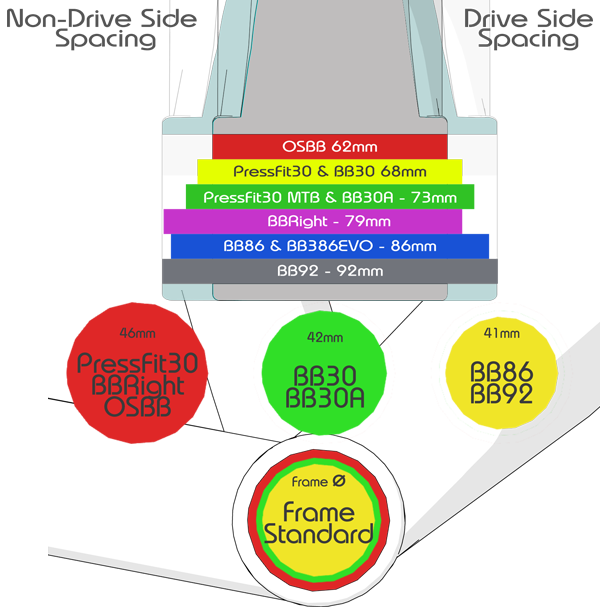Bottom Bracket Selection Guide


It doesn't take much time, effort, or money to keep your BBInfinite Ceramitech pulleys running strong year in, year out. Check out this short vid to find out how easy it is to stay infinitely faster. The precedure in this video applies to all Ceramitech pulleys. Servicing your Ceramitech pulleys is quick and easy. All you need is a razor knife with a new blade in it, a ceramic bearing grease, and our good old friend, White Lightening Clean Streak. And wear gloves because this is going to get very nasty. First, clean the outside of the pulley thoroughly to prevent introducing contamination into the bearing. Next, use the utility knife to carefully pry off the bearing shields. Take your time and be careful not to dig into the Delrin as you slip the blade beneath the shield. And, of course, don't slice or stab yourself. Use the tip of the blade to remove the yellow bearing seals. You can use a fine pick for this if you prefer. Do not dig in or pry excessively as this will damage the seals. Carefully clean the shields and seals. Next, flush out the bearing. Spin the bearing as you flush to ensure that any trapped particulate will evacuate. If you have compressed air you may use it to dry the bearing. If not, simply wipe off excess solvent and let pulley air dry. Next, distribute small amounts of grease into the bearing. Do not over-grease. Too much grease will case the ball bearings to slide rather than roll as intended, which will diminish performance. Give the inner race a spin to disperse the grease and observe freedom of movement. Install the seals, taking care to push each seal evenly into its retention groove cut into the outer race. This takes little effort. There should be a slight but visible gap where the seal meets the inner race. Ensure this gap is even as this is the best indication that the seal is properly positioned. The bearing should spin freely when you are done. Snap the bearing shields into place. Well, there you have it, quick and easy. Now you should service your pulleys about every 2,000 miles for a road bike and every 40 hours or so for a mountain bike. Of course, this changes a little bit depending on conditions. If it was really nasty, like a cyclocross race, or the Dirty Kanza, you should probably service them right after your race.
Comments will be approved before showing up.
